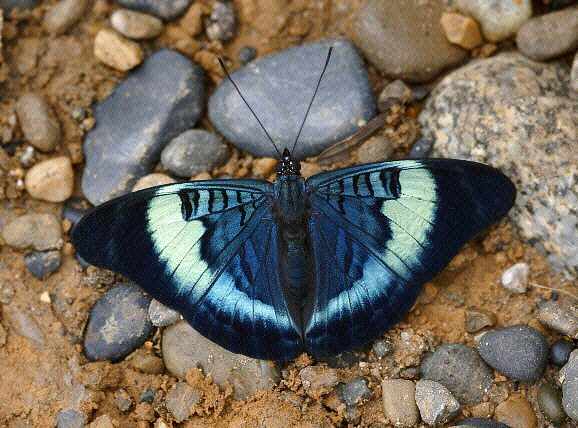 Panacea prola amazonica, male, Manu, Madre de Dios, Peru – Adrian Hoskins
Panacea prola amazonica, male, Manu, Madre de Dios, Peru – Adrian Hoskins
Introduction
The genus Panacea contains 3 known species, all confined to the neotropics.
The underside hindwings of all Panacea species are reddish. In procilla the ground colour is reddish brown, overlaid with broken wavy black lines and a series of submarginal ocelli. It also has reddish maculae in the forewing discal cell. In prola the underside is bright red and without ocelli. Both prola and procilla have red maculae in the underside fw discal cell, but these are absent in regina.
The iridescent bands on the upperside of all Panacea species are a highly reflective pale turquoise colour when viewed from directly above in bright sunlight. In overcast conditions, when viewed at certain angles, the colour changes to a beautiful shade of sky blue.
Panacea prola is found throughout much of South America, from Colombia to southern Brazil but is more abundant in the foothills of the eastern Peruvian Andes than anywhere else.
 Panacea prola amazonica, Pantiacolla, Rio Alto Madre de Dios, Peru – Adrian Hoskins
Panacea prola amazonica, Pantiacolla, Rio Alto Madre de Dios, Peru – Adrian Hoskins
Habitats
This species appears to be confined to rainforest and transitional cloudforest, at altitudes below about 1000m. It becomes increasingly abundant at lower altitudes, and can be extremely common below 500m in certain areas, e.g. in the forests of the Manu in southern Peru.
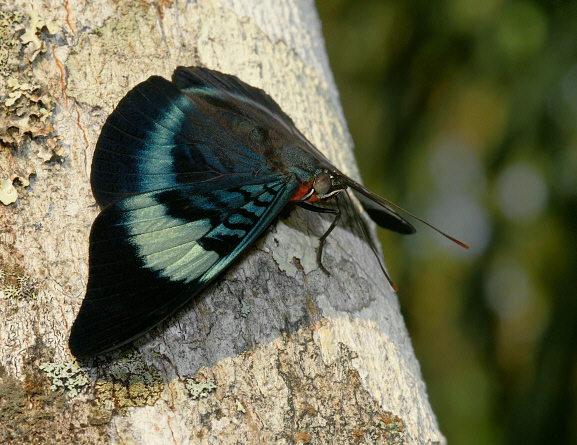 Panacea prola amazonica, Pantiacolla, Rio Alto Madre de Dios, Peru – Adrian Hoskins
Panacea prola amazonica, Pantiacolla, Rio Alto Madre de Dios, Peru – Adrian Hoskins
Lifecycle
Surprisingly the lifecycle and larval foodplants of this common butterfly are apparently unknown.
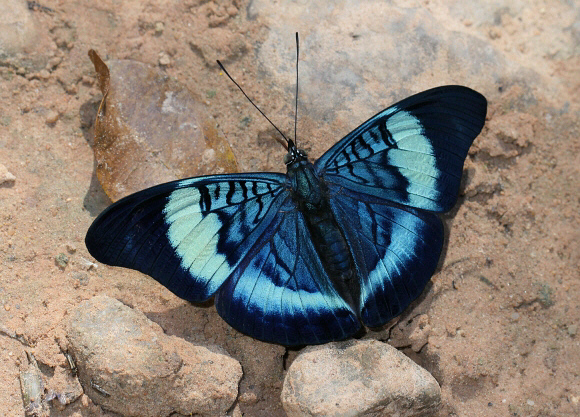 Panacea prola amazonica, Pantiacolla, Rio Alto Madre de Dios, Peru – Adrian Hoskins
Panacea prola amazonica, Pantiacolla, Rio Alto Madre de Dios, Peru – Adrian Hoskins
Adult behaviour
The butterflies roost amongst foliage high in the forest canopy. In the early morning they can be seen basking on tree trunks at a height of about 10-15 metres, head downwards, with wings flattened against the bark of the tree.
As temperatures begin to climb and light levels increase, they gradually descend to bask at lower points on the trunk, but will fly back to bask much higher up if disturbed. Later, even the weather remains cool and overcast, they descend to settle on riverbanks, often settling on rocks, stones, or logs. Once the butterflies have been on the ground for a few minutes they become very reluctant to move, and will remain basking until dusk, even during light showers or drizzle.
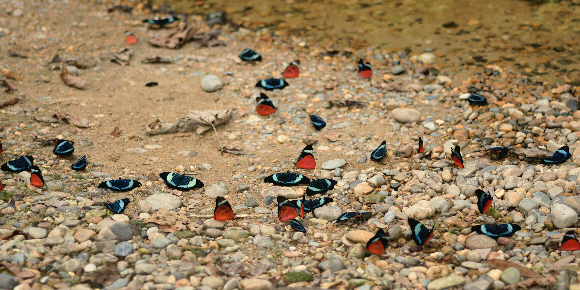 A mixed group of 40 Panacea prola and Panacea regina, Rio Madre de Dios, Peru – Adrian Hoskins
A mixed group of 40 Panacea prola and Panacea regina, Rio Madre de Dios, Peru – Adrian Hoskins
Males congregate in groups of up to 50, basking with wings outstretched, as they imbibe mineral-rich moisture on sandbanks. When one individual detects a threat from an approaching bird or human, it responds by fanning it’s wings to display the bright red underside. This acts as a signal to warn it’s brethren, who also start fanning their wings, so that the whole group quickly becomes alerted to the danger and is ready to fly up into the trees to escape.
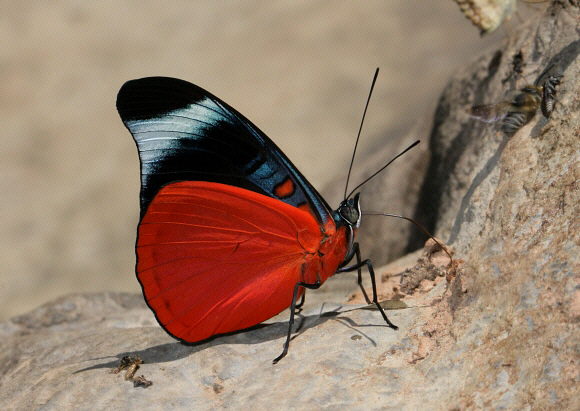 Panacea prola amazonica, Satipo, Peru – Adrian Hoskins
Panacea prola amazonica, Satipo, Peru – Adrian Hoskins

Panacea prola amazonica, Satipo, Peru – Adrian Hoskins
